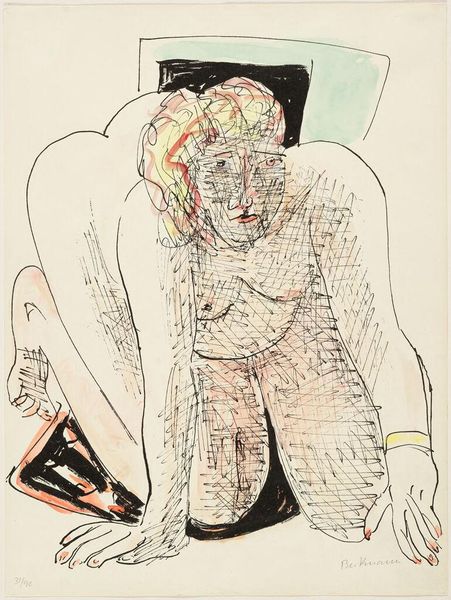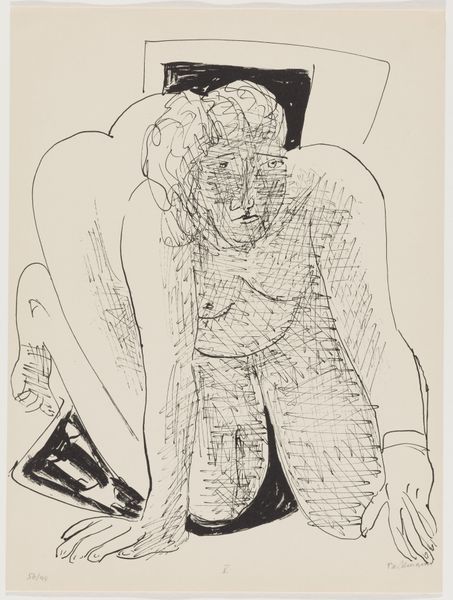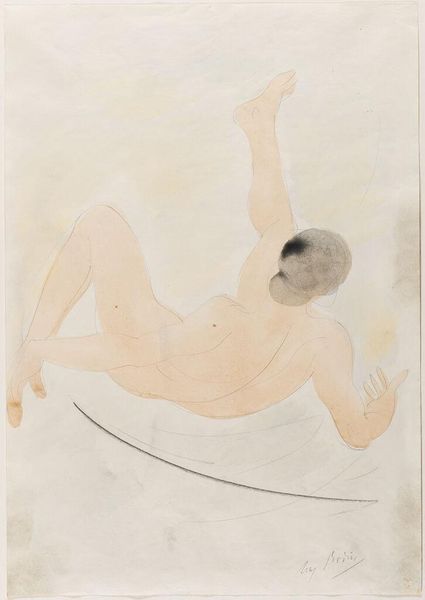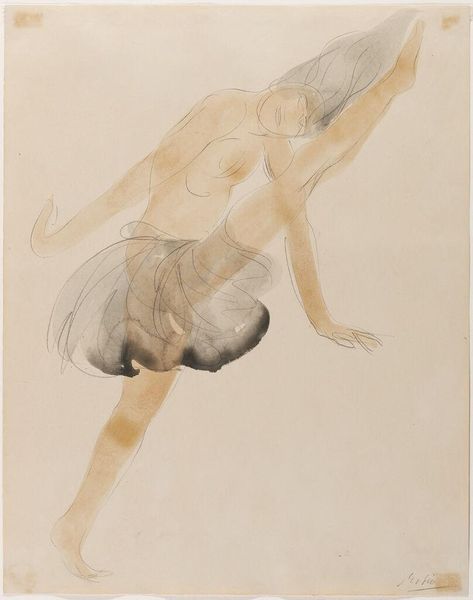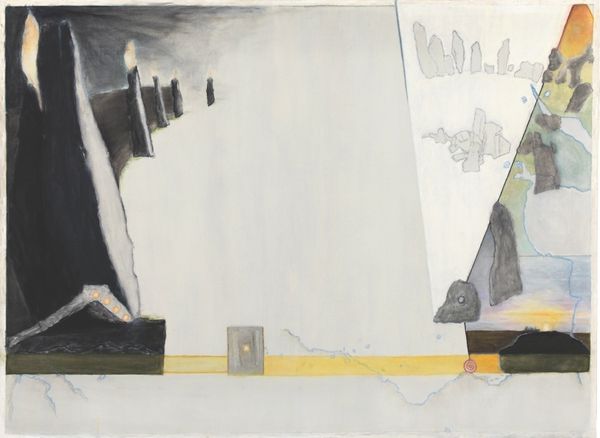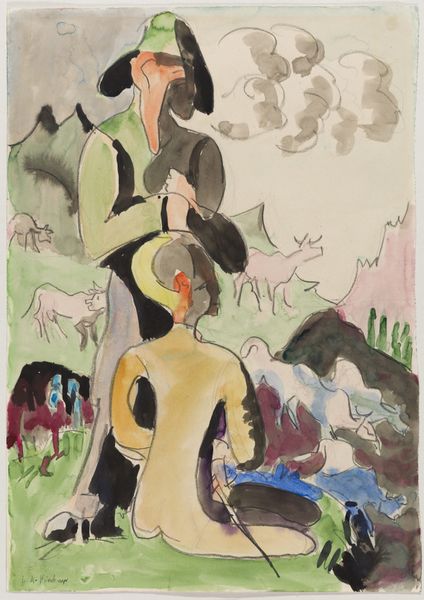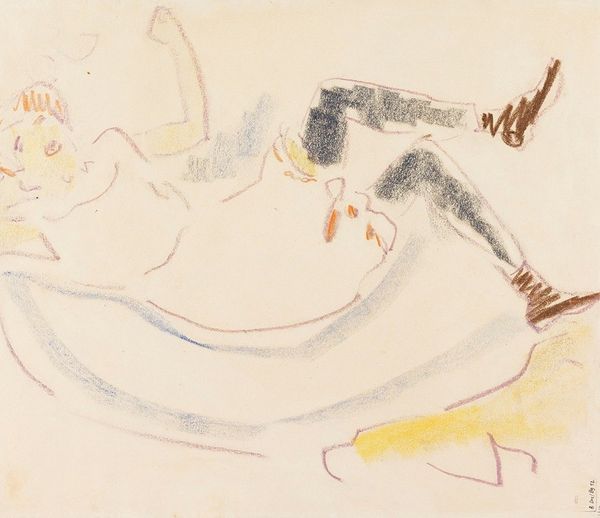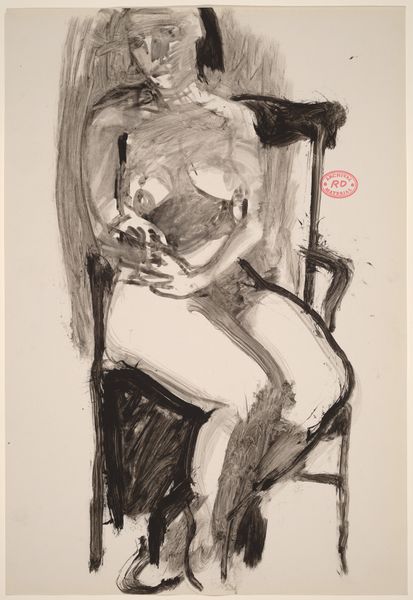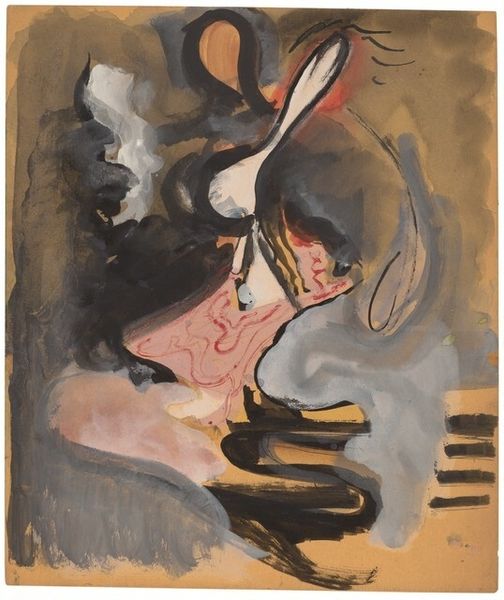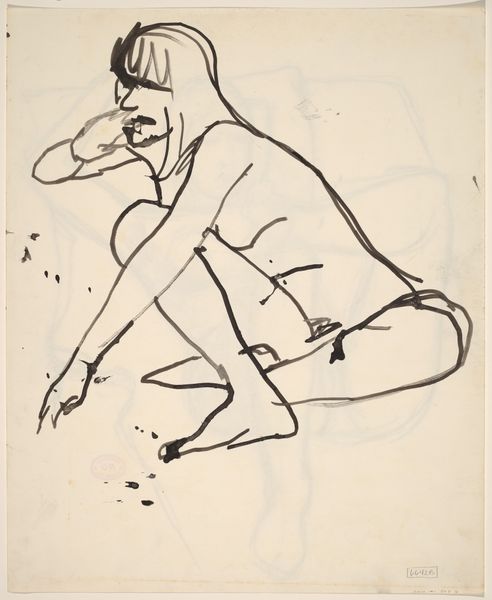
Dimensions: 198 x 147.5 cm
Copyright: Francis Bacon,Fair Use
Editor: Here we have Francis Bacon’s "Figure in Movement," painted in 1972, using oil on canvas. The figure seems to be contained, almost trapped. How do you interpret this work? Curator: Well, the geometric cage immediately leaps out, doesn't it? Bacon used that device repeatedly. The cube represents the alienation of modern life, trapping the raw, almost primal human form. Notice the obscured face. What does that suggest to you? Editor: Perhaps a loss of identity? Or maybe an attempt to hide? The figure is also holding some kind of text… Curator: Precisely. The text introduces the possibility of language, of reason, as another form of confinement, attempting to impose order on the visceral. Do you think it succeeds? Editor: I don't think so. The distorted form rebels against the structure, doesn't it? There's an inherent tension between the controlled geometry and the uncontrolled figure. Curator: Indeed. Bacon's recurring exploration of existential angst is heavily influenced by post-war disillusionment, wouldn't you say? It taps into deep, universal fears about freedom and control. What would it be like to feel this cornered, not even able to see your fears, or face them? Editor: Thinking about it, the 'figure in movement' is ironically motionless, trapped within a structure... Thank you, that gives me so much to consider about how constraints might shape and be shaped by art. Curator: My pleasure. Art, after all, is at its finest a complex conversation we're forever invited to take part in. It's been very interesting talking through this artwork with you.
Comments
No comments
Be the first to comment and join the conversation on the ultimate creative platform.

